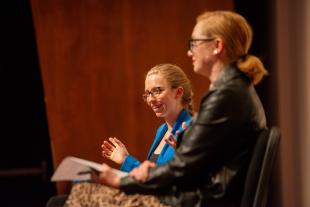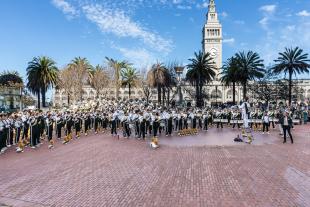'These Women Were Lost to History.' Students Curate Museum Exhibit on SLO's Hidden Voices
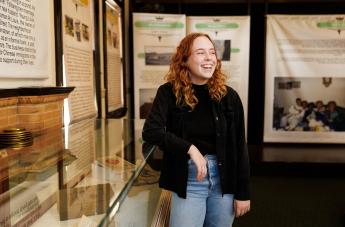
A new historical exhibit in San Luis Obispo delves into the lives of four women who were pillars of the local community — and it was co-curated by two Cal Poly students.
“Hidden Voices,” which is currently on display at the History Center of San Luis Obispo County, was the product of nearly two years of work by recent anthropology and geography graduate Zoë Levit and fourth-year history major Jess O’Leary.
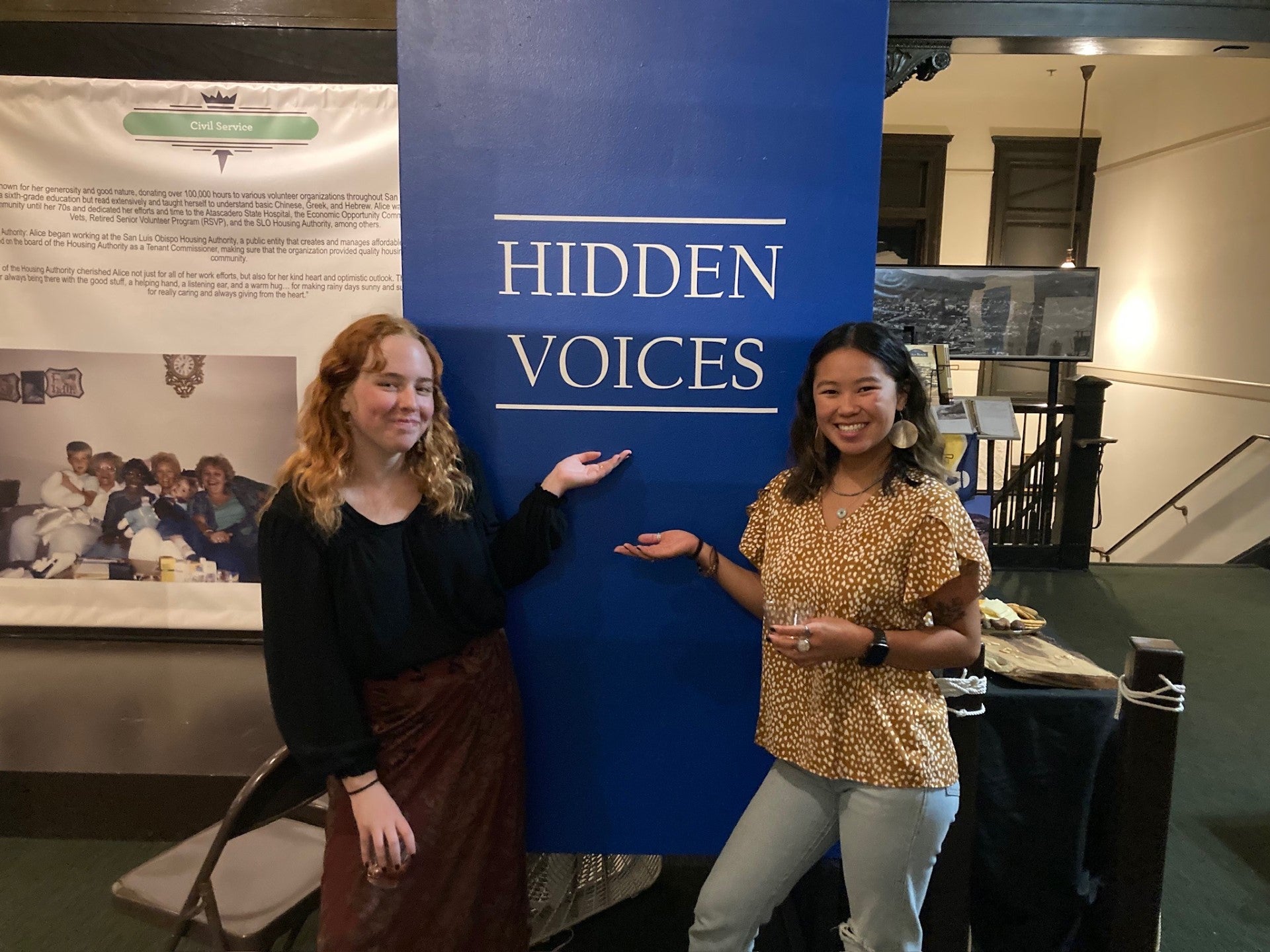
"It’s called Hidden Voices because these women were lost to history. Their stories — their contributions to San Luis Obispo — were forgotten,” Levit said.
The exhibit spotlights Nettie Sinsheimer, philanthropist and wife of prominent 19th century businessman A.Z. Sinsheimer; Stella Louis, co-founder of the Chinese Students Association of Cal Poly and daughter-in-law of well-known Chinese merchant Ah Louis; civil servant and “Black Rosie” Alice Martin; and Maxine Lewis, who founded an organization to help others called Grassroots II, which is still operating today.
“Working with Zoë and Jess was a pleasure,” said Thomas Kessler, the History Center’s executive director. “They brought a perspective to talking about history that is extremely valuable for our community.”
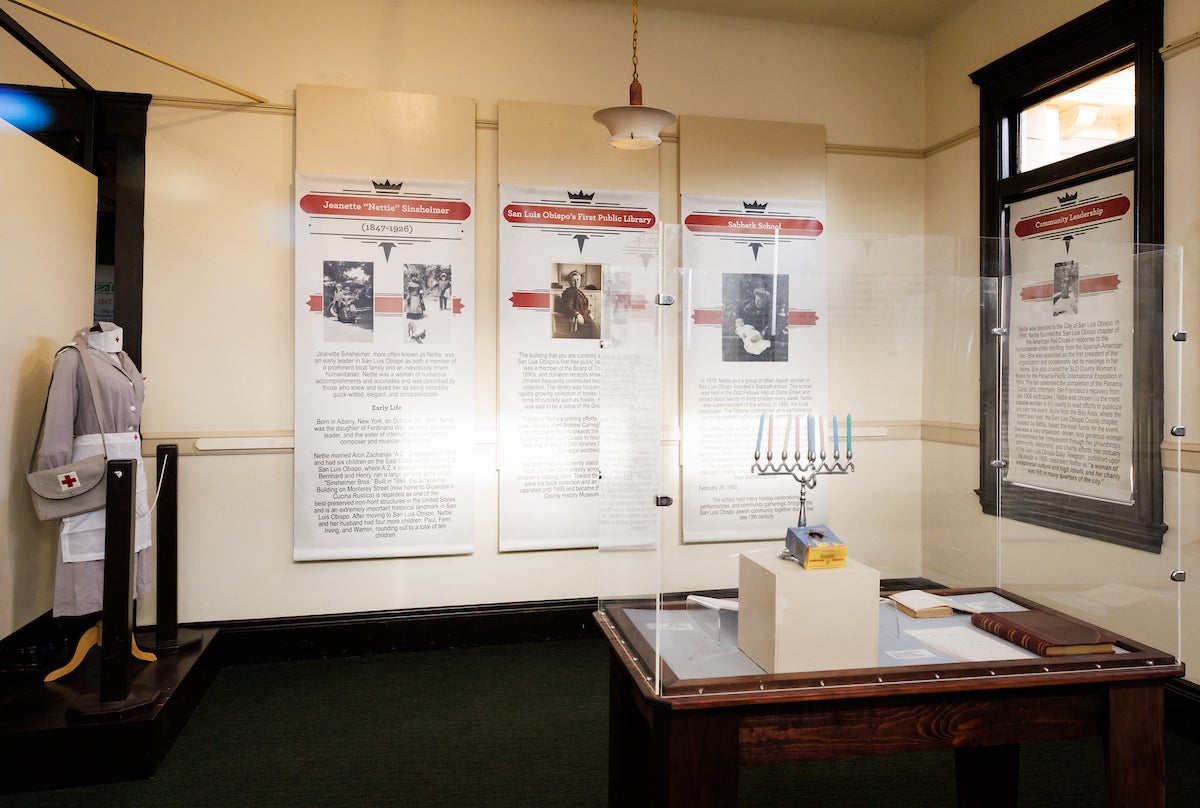
The pair started the project by researching Nettie Sinsheimer and Stella Louis, some of whose belongings are stored in the History Center’s offsite warehouse. They found the information they needed easily enough, but locating objects to help tell these women’s stories involved a few days of combing through the warehouse for artifacts.
“It was such a daunting task and we had no idea where to start,” O’Leary said. “We were searching for objects we wanted to use in the exhibit, but we didn’t know what we were looking for and we didn’t know if we would find anything.”
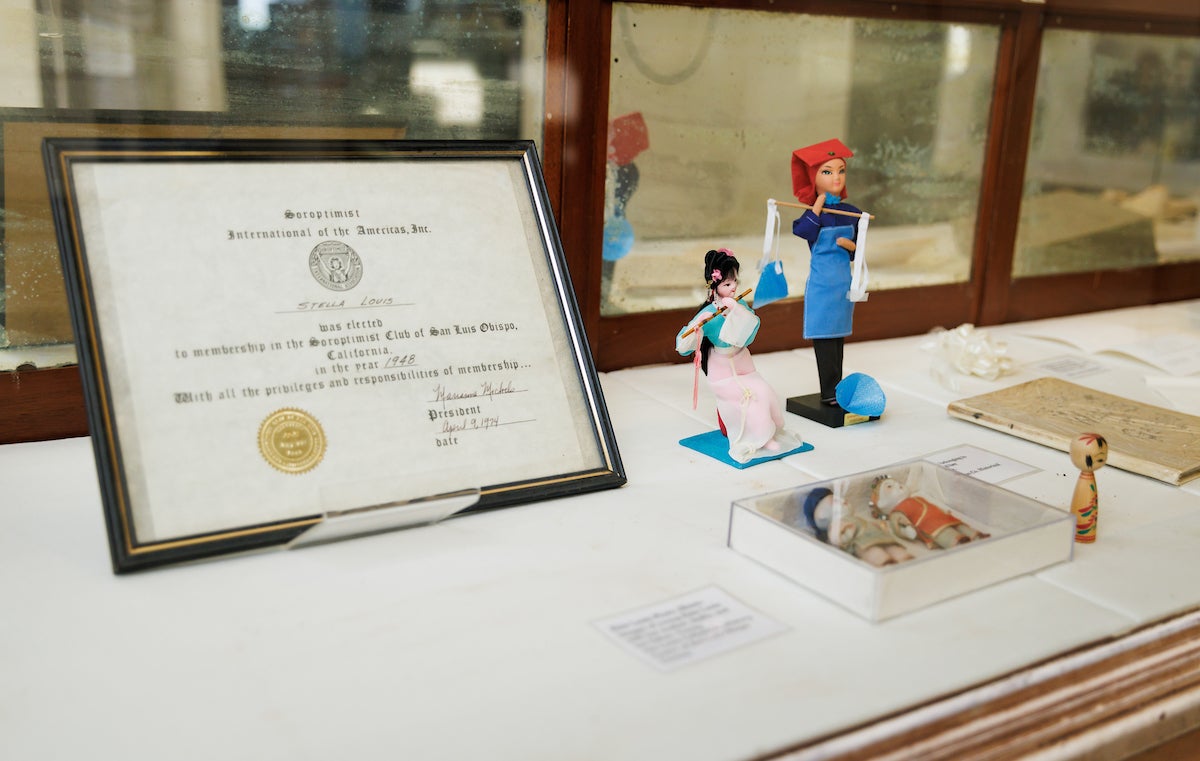
They decided to use a mix of items that belonged to the women — like a book awarded to Nettie Sinsheimer and Stella Louis’ dolls and wedding invitation — and other things that helped illustrate the different time periods and the women’s unique cultures, such as an antique nurse’s uniform and a box of vintage Chanukah candles resting against a menorah in Nettie’s portion of the exhibit.
“We have a bunch of really cool artifacts in the exhibit that were exciting for us to find,” O’Leary said. “We’d be digging through stuff and suddenly — ‘Oh my gosh, this is the journal of this woman I've been reading about.’ I think that was the most satisfying part of curating this.”
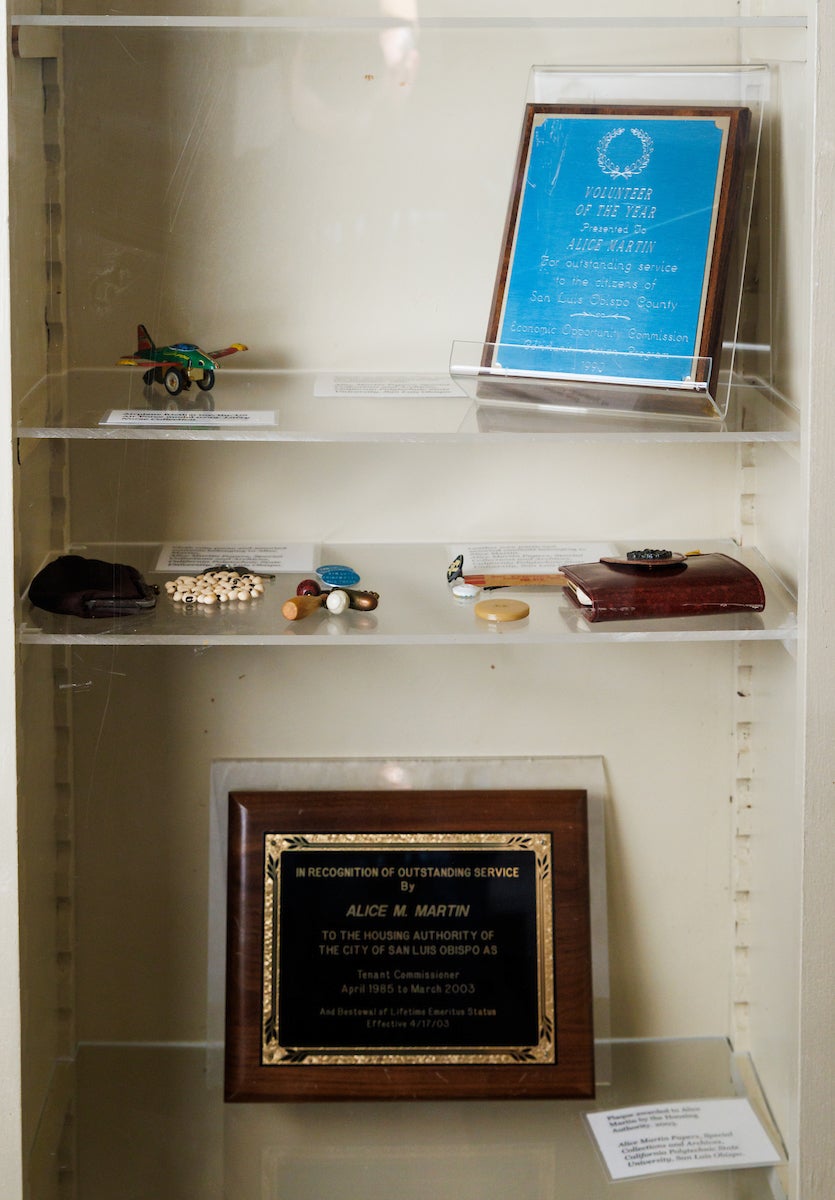
Levit and O’Leary also worked with Cal Poly archivist Laura Sorvetti, who first told them about Alice Martin, to review Martin’s collection at the Cal Poly Special Archives. Martin, a “Black Rosie” who supported the war effort as an aircraft mechanic during World War II, worked for decades at the San Luis Obispo Housing Authority. Her items that Levit and O’Leary chose for their exhibit include photos, a small toy airplane and two plaques for her outstanding volunteer service and work with the Housing Authority.
Finding information on Maxine Lewis was a bit more challenging: at first, Levit and O’Leary only found a few newspaper clippings and a photo. They conducted extensive interviews with Peggy Fowler, the executive director of Grassroots II, and Lewis’ daughter to learn more about Lewis and her impactful life.
“A lot of this process was the research gathering stage. That took a long time because we just wanted to get as in-depth as we could,” O’Leary said.
There was just one item they intentionally left out of the exhibit: a piece of Stella Louis’ petrified, 100-year-old wedding cake, unearthed in a box of her belongings.
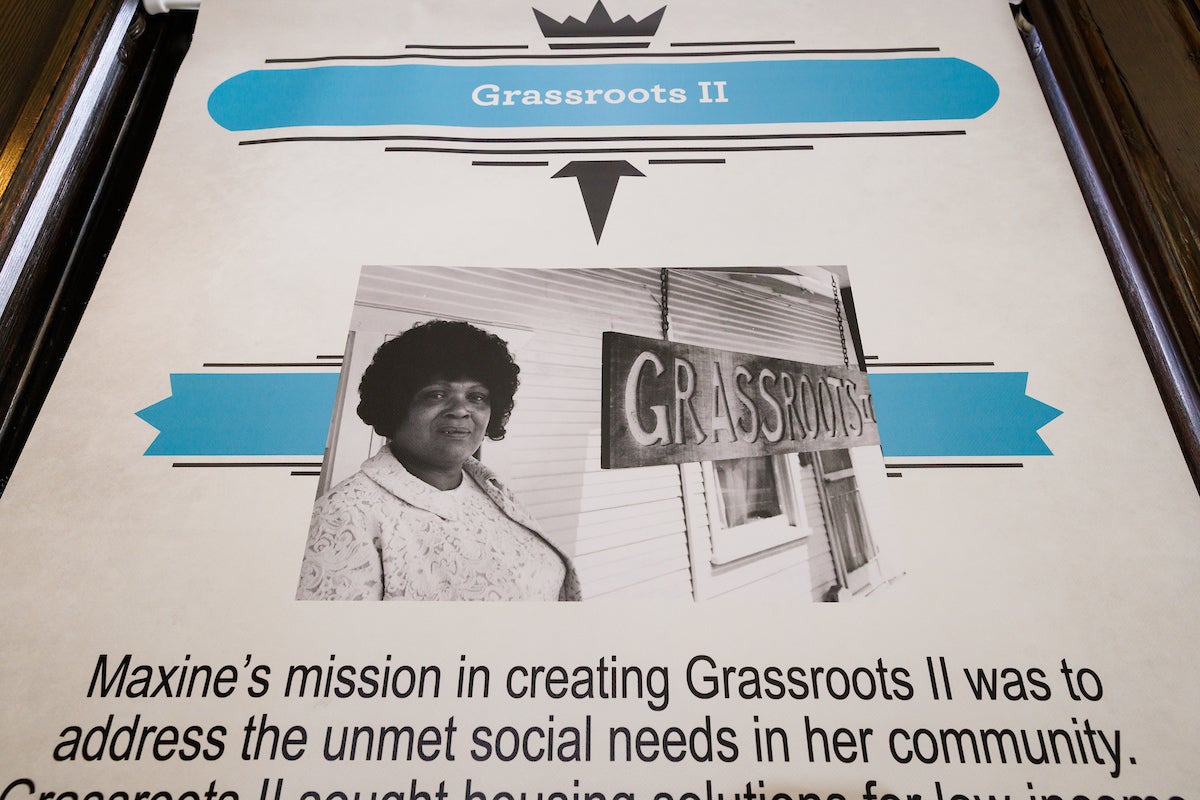
When the exhibit opened in November, Levit and O’Leary were pleasantly surprised by some special guests: Maxine Lewis’ family.
“Jess and I had no idea that was going to happen,” Levit said, adding that the family asked when the exhibit would close to ensure a relative driving in from LA could make it in time. “It was so surreal to have her family there and just be able to speak to them and hear their stories about this woman who was so incredible. That was the coolest part for me.”
Working on an exhibit for that long meant that both Levit and O’Leary formed a unique connection with the women they researched, but Stella Louis held an especially personal resonance for Levit.
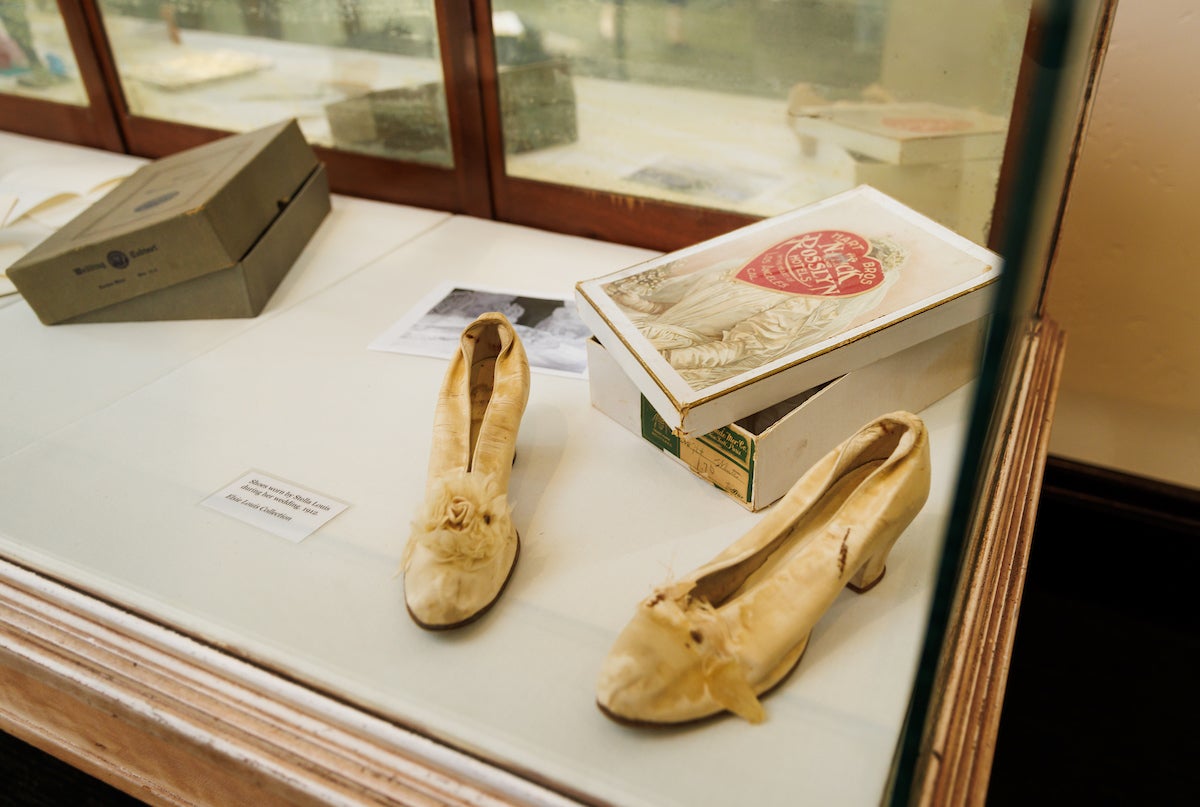
“I’m a Chinese American woman myself,” Levit said. “Stella introduced Chinese culture and tradition to the people of San Luis Obispo in the 1920s. She and her husband had a restaurant that was a hangout for Cal Poly students and introduced them to Chinese food and she hosted Chinese New Year at her house. She also founded the Chinese Students Association, which is one of the biggest identity-based organizations on campus.
“Introducing this personal culture to people has been something I’ve tried to do in my own life. I really liked the way she was very welcoming to all people who were interested in Chinese culture and broke down the walls of fear of another identity especially in a time when people weren’t as welcoming. I think she was very brave in that regard.”
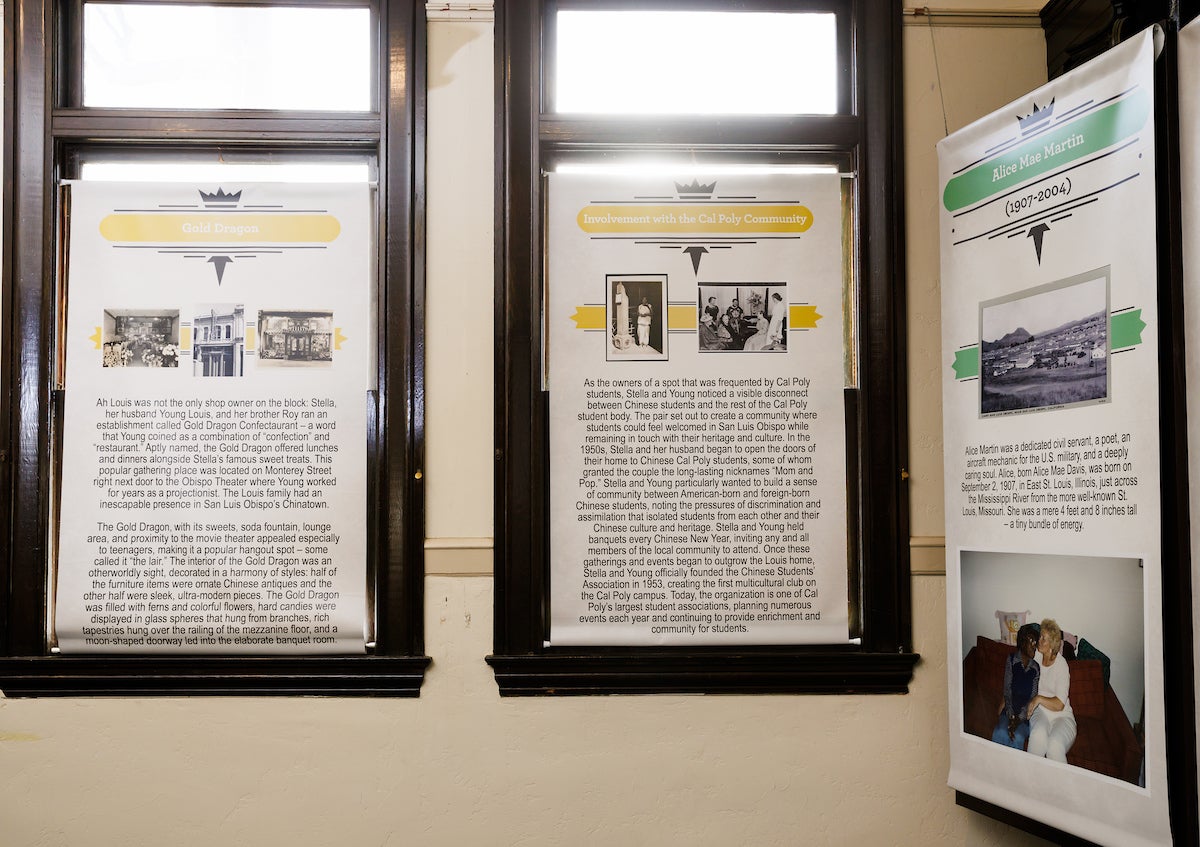
The process of researching and putting together an exhibit was a Learn by Doing experience for both students in different ways. For O’Leary, who plans to pursue law school, the process helped her develop communication and research skills. For Levit, the process helped her with her career direction.
“My master’s thesis is actually related to collections. I want to keep putting up exhibits,” Levit said. “I really like designing and figuring out a way to convey information to a broad audience about a niche subject.”
The exhibit doesn’t have a set end date, and both Levit and O’Leary hope the stories of these women stay with people who come to the exhibit when they leave.
“A lot of history, to people who don’t study history, feels boring because it’s wars and monarchs and broad-scale events — which do inform the way we live today, but they’re not the kind of stories that stick with you,” O’Leary said. “We wanted to lay out these really personal histories of these women that hopefully someone will think about and internalize — even if it’s just on the walk from the museum to the car.”
“I hope that the stories that we tell go back home with the audience and that the lives and legacies of these women are preserved, that they aren’t forgotten,” Levit said. “I don't want them to be forgotten again.”


